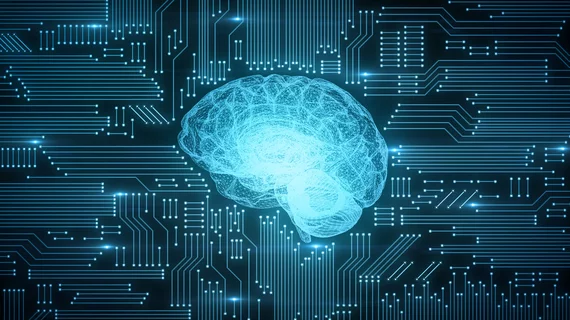AI predicts risk of thyroid cancer on ultrasound images
Radiologists can use a new automated machine learning model as an additional tool to improve thyroid cancer diagnosis, according to new research out of Thomas Jefferson University.
“Currently, ultrasounds can tell us if a nodule looks suspicious, and then the decision is made whether to do a needle biopsy or not,” Elizabeth Cottril, MD, an otolaryngologist at the university, said in a statement. “But fine-needle biopsies only act as a peephole, they don’t tell us the whole picture. As a result, some biopsies return inconclusive results for whether or not the nodule may be malignant, or cancerous, in other words.”
Cottril and colleagues trained their machine learning model to identify high-risk nodules on ultrasound images, publishing their methods in JAMA Otolaryngology- Head & Neck Surgery. The model was highly accurate for distinguishing benign from malignant nodules, more so than traditional molecular testing.
Such testing analyzes biopsy cells for the presence of specific mutations or molecular markers associated with thyroid cancer, however, molecular testing standards are far from finalized, the authors noted, and unavailable in many practice settings—particularly smaller hospitals.
Therefore, the team turned to an AI model created by Google. Cottril et al. trained the model on 121 patients who underwent ultrasonography and molecular testing for thyroid nodules between January 2017 and August 2018 at a single academic care center.
Results showed the algorithm achieved a 97% specificity and 90% positive predictive value. Essentially, the authors explained, 97% of patients who have benign nodules would have had their ultrasound read as such; and 90% of malignant nodules would be classified as positive via the algorithm. The overall accuracy of the algorithm was 77.4%.
“Machine learning is a low-cost and efficient tool that could help physicians arrive to a quicker decision as to how to approach an indeterminate nodule,” said John Eisenbrey, PhD, associate professor of radiology and lead author of the study. “No one has used machine learning in the field of genetic risk stratification of thyroid nodule on ultrasound.”
More research will be needed to increase the sample size and improve data, but the future is promising, according to the researchers.
“There are so many potential applications of machine learning,” Eisenbrey added. “In the future we’d like to make use of feature extraction, which will help us identify anatomically relevant features of high risk nodules.”

